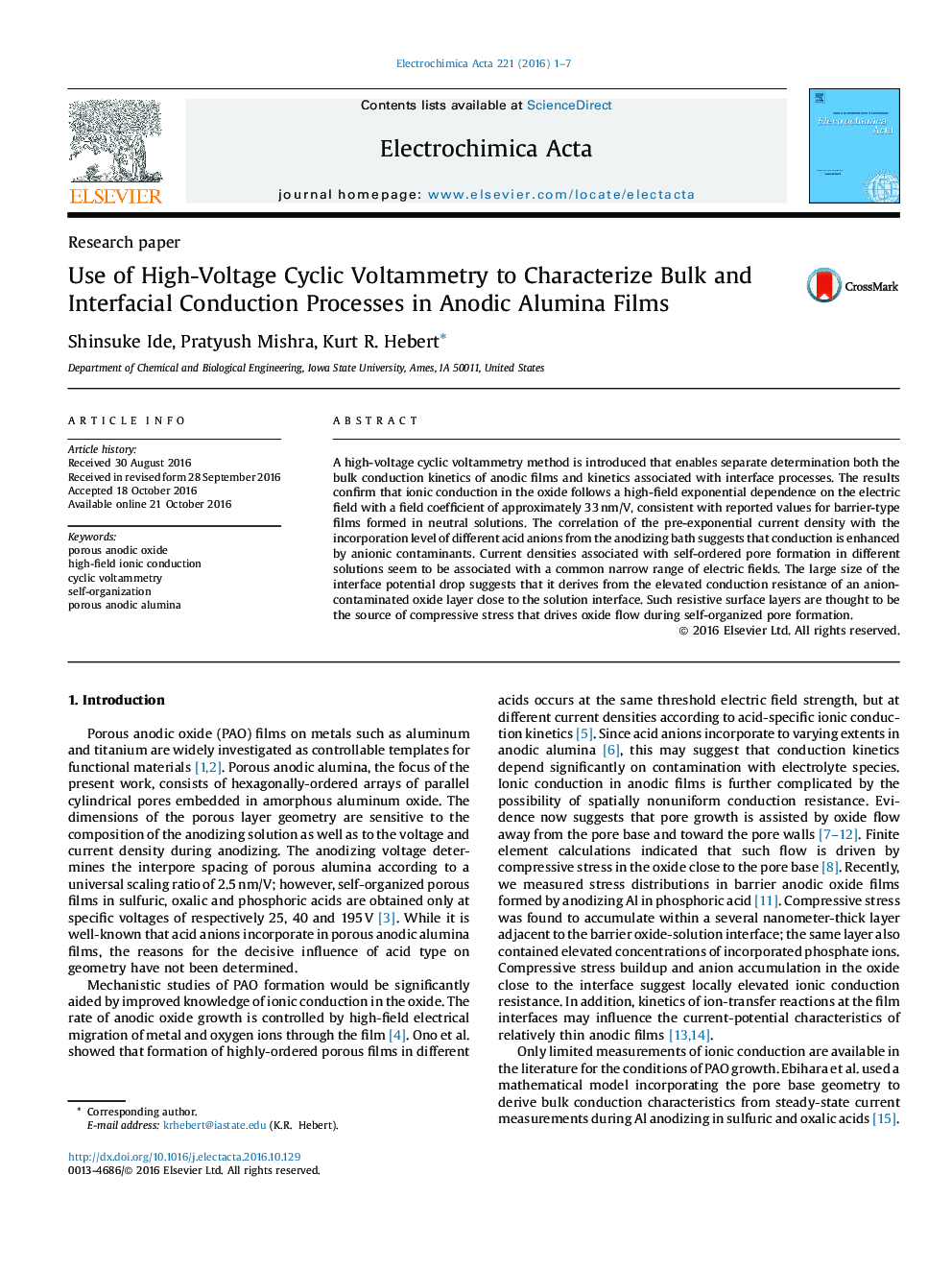| Article ID | Journal | Published Year | Pages | File Type |
|---|---|---|---|---|
| 6472736 | Electrochimica Acta | 2016 | 7 Pages |
â¢Cyclic voltammetry reveals conduction and interface kinetics in anodic alumina.â¢Bulk conduction kinetics suggest sensitivity to incorporated anions in the oxide.â¢Interfacial kinetics represent conduction in anion-contaminated surface layers.
A high-voltage cyclic voltammetry method is introduced that enables separate determination both the bulk conduction kinetics of anodic films and kinetics associated with interface processes. The results confirm that ionic conduction in the oxide follows a high-field exponential dependence on the electric field with a field coefficient of approximately 33Â nm/V, consistent with reported values for barrier-type films formed in neutral solutions. The correlation of the pre-exponential current density with the incorporation level of different acid anions from the anodizing bath suggests that conduction is enhanced by anionic contaminants. Current densities associated with self-ordered pore formation in different solutions seem to be associated with a common narrow range of electric fields. The large size of the interface potential drop suggests that it derives from the elevated conduction resistance of an anion-contaminated oxide layer close to the solution interface. Such resistive surface layers are thought to be the source of compressive stress that drives oxide flow during self-organized pore formation.
